Picture this scenario, you’re working on your computer or doom-scrolling on your phone. You’re in your own little world and not paying attention to your feline friend. Meanwhile, Fluffy over there is giving you the famed cat stare.
You finally make eye contact with your cat. They’re sitting up and alert, making direct eye contact with you.
What does your floof want? It’s probably not a staring contest though sometimes it feels that way. You can tell a lot by the body language, time of day, and household habits.
In my house, the direct eye contact usually meant my 20-pound grey and white tabby wanted food.
At first, Romeo started his stare down a little before the usual 4 p.m. feeding. He’d sit near the kitchen and stare patiently while I answered emails and wrote articles. If I didn’t get up quickly enough to offer mealtime morsels of newly opened canned food, he’d come closer.
And closer. If I continued ignoring his pleas (it got to the point where this happened multiple times in an hour), then he’d come closer still and finally paw me.
“I can’t feed myself, you know.” His glower seemed to say.
Maybe that’s the message your feline friend is sending too. As every cat owner knows, cat communication ranges from meows, slow blinks, head butts, kneading, and, yes, direct eye contact.
Your cat’s body language is their primary non-verbal communication with you and other animals. They may want food, a clean litterbox, or it may just be a show of affection and wellbeing.
The key is, what else is going on?
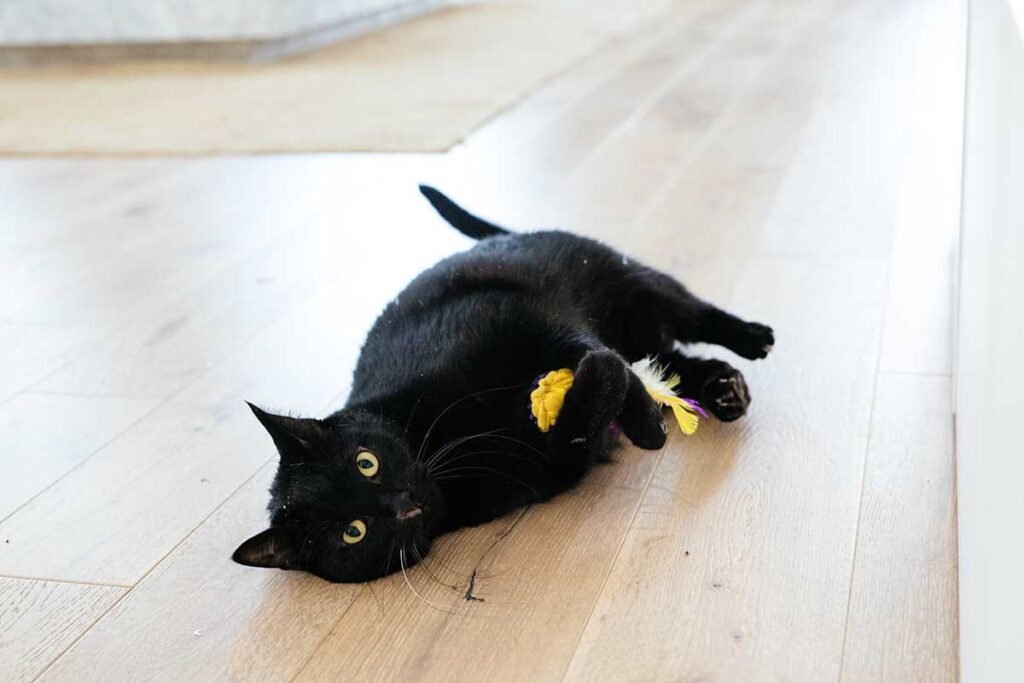
Why Do Cats Stare?
Dr. Crista Coppola, PhD is a Certified Cat Behaviorist for SeniorTailWaggers.com. She says cat owners “can be looking at you intently for a variety of reasons, from watching what you are doing to asking for attention or even being frightened.”
The key to unraveling your cat’s body language is to ask yourself two questions:
- What are you doing right now?
- What’s the rest of your cat’s body language say?
For example, if you’re prepping a salmon dinner, your kitty may weave in and out of your legs vocalizing their adoration for you. Obviously, they want a tasty tidbit.
Here are three other common cat behaviors.
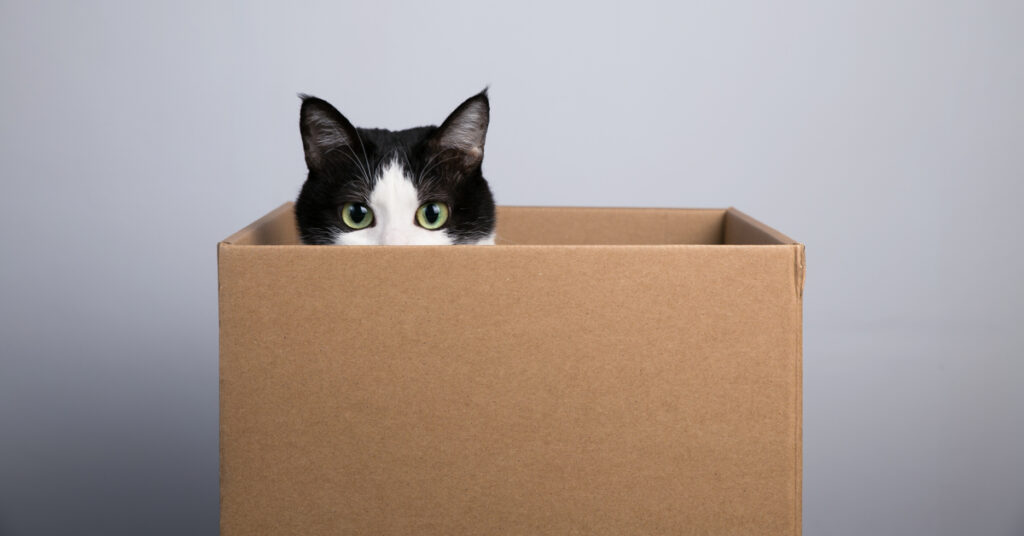
Happy Cat
When your kitty gazes at you with adoration, you feel like their favorite person. Their body language is full of signs of affection. Dr. Coppola says, “Soft eyes, a slow blink, and relaxed body posture says they may be curious about what you’re doing. Or, they’re hoping for some interaction.”
Happy kitties often purr. They might sit near you and be happy to be close and watching you. If they’re meowing, though, they probably want something. If your cat rubs against you meowing and purring, they usually want you to pet them. If they start kneading you, that’s often a way of showing affection and wellbeing.
Hungry Kitty
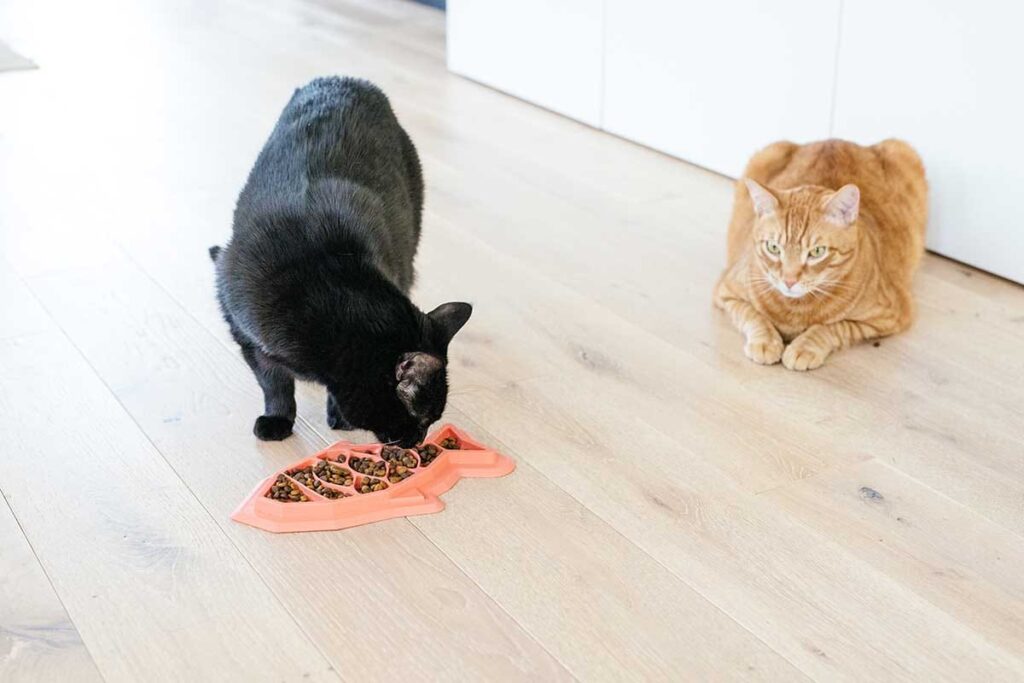
Every pet parent knows their pet can tell time. When it starts getting close to meal-time, the four-legged furkids show up and let you know their food bowl needs replenishing.
Our tabby Romeo always fixed us with the cat stare a full 30 minutes before his regular mealtime, and he didn’t let up until we fed him.
Scared or Anxious Kitty

Hopefully, your feline friend is usually relaxed and content, but if they’re scared or anxious, it’s easy to tell. They’ll crouch down and have tense body language, and they may try to hide under furniture and make themselves small.
Dr. Coppola says, “Wide pupils with a tense body indicate fear. If you can’t determine the source of their fear, ensure they have an escape option.”
A cat’s natural instinct is to run away when scared. If they feel trapped, that could mean lashing out with claws or other aggressive tactics.
Annoyed or Angry Cat
If a frightened runs and hides, an angry cat makes itself big. They’ll arch their backs, twitch their tail and often make growling noises. You may see your cat hiss or take a swipe at something claws outstretched.
If your cat is annoyed or angry, it’s also a good idea to make sure your kitty has an escape route. An escape can be another room or a high shelf where your cat can’t be pursued.
Should You Stare Back At Your Cat?
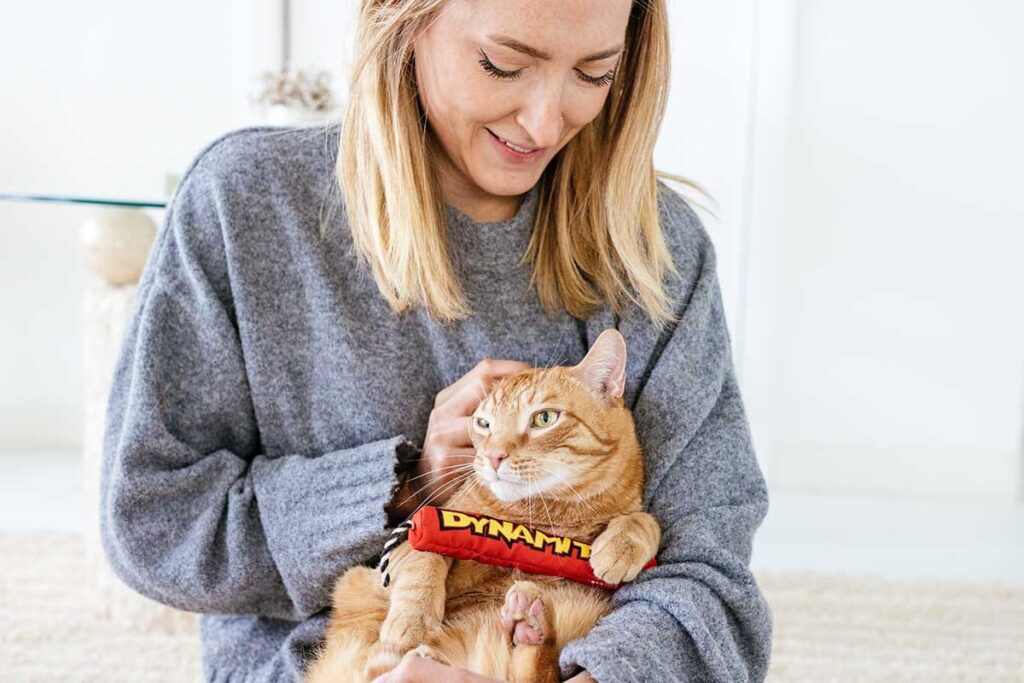
When your cat stares at you for long moments, it can feel a little creepy. When you move around the room doing your thing and your cat never blinks, it can feel like one of these creepy dolls from a horror movie. You know, the kind that wants to stab you in your sleep.
Fortunately, your cat’s stare probably doesn’t hide malicious intent. Your feline friend just wants your attention. A snuggle session, playtime, or feeding will usually do the trick. Sure you can stare back but your cat will probably win any staring contest since felines are genetically designed to be able to hold their eyes open for a long time. Not blinking helps the cat track prey.
Your cat knows they can outstare you. If the cat stare doesn’t get them what they want, they’ll come over to you and give you a head butt or get in between you and your computer.
In Summary
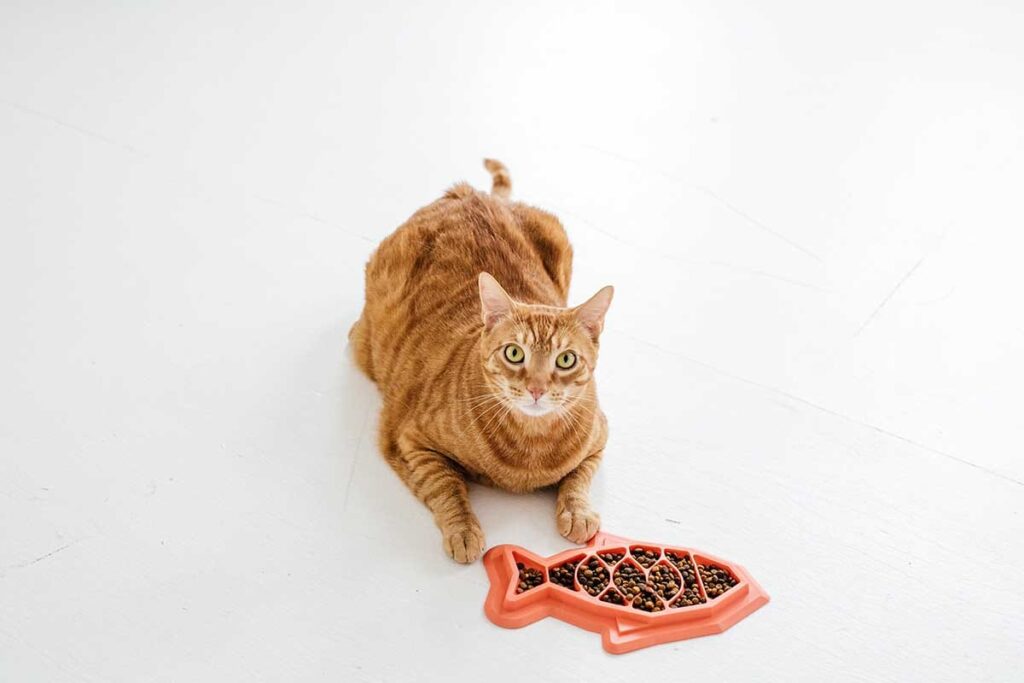
As you can see, cat stares are a common form of cat communication. Pair the body postures with your kitty’s eye contact, and you’ll discover a lot about your cat’s nonverbal communication.
A contented kitty may purr with contentment and watch you while lounging in a patch of sun. Relaxed eye contact with slow blinks is a sign of affection towards their favorite person. A cat stares near mealtime usually means your cat is hungry and wants you to feed them. A crouching, tail twitching cat, staring at something across the room, shows classic stalking behavior.
So in answer to the question, what does it mean when cats stare at you? It depends on what the circumstances are around you. When does your cat stare at you?

